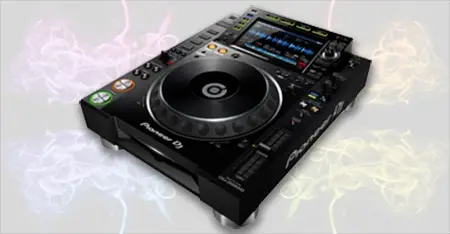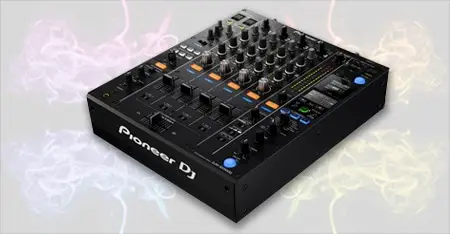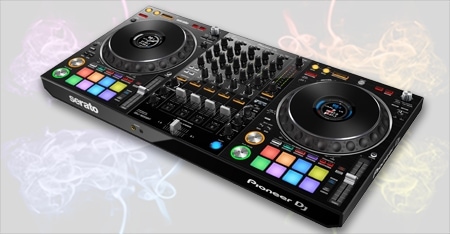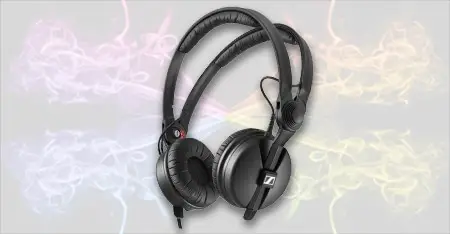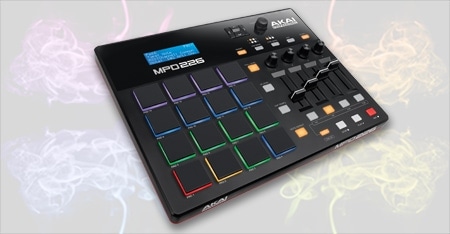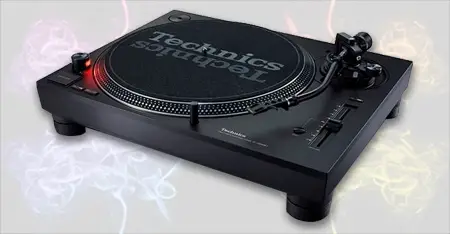
I love DJing at house parties, they are so laid back that you can really relax into your set and let loose. Club shows are very different from weddings which are different again from parties. Each requires slightly different angles so I’m gonna give you some tricks for how to DJ a party properly.
There are, of course, some commonalities between types of DJ gigs. However, parties can be amongst the most fun and stress-free gigs you can do. Everyone is there purely to have a good time and there is a less intense focus on the DJ than in a club for example.
Of course, you’ll still want to smash it so let’s dive in…
Knowing Your Audience
Contents
An important part of how to DJ a party is to consider how much you know about that audience.
For example, if they are your friends then this makes things easy. Chances are you already know the genres and types of music that they are into. You can tailor your set towards hitting as many of those tracks, or genres, as possible.
However, if you don’t know anyone at the party then you’ll want to prepare to please as many people as possible. This is where the skill of reading a room comes in.
When You First Start Playing
To do this successfully, you should have a selection of musical styles available. This can either mean a wide range of genres or if you are genre-specific, say a Techno or House DJ, then make sure that you have a few subgenres available.
To explain what I mean I will use extreme ends of the spectrum.
So for example, if you are a House DJ, then make sure to have some high-energy, hard house, ranging down to chill-out house in your collection.
This means that when you first do your set you can play a mixture of those styles and see what the crowd reacts to. This then gives you an idea of what direction your set should take.
This will of course, also be influenced by the level of energy at the party.
Know What Stage the Party Is At
If it’s still early in the evening, when people are arriving or just starting to drink, then you’ll probably want to start by playing the mid-energy music. This is because, at this point, you’re just warming the crowd up.

Keep testing tracks and slowly ramping up your set throughout the night. Keep an eye on the dancefloor to see what vibes people are reacting to.
Changes happen pretty quickly with audiences i.e if there’s a certain track that isn’t going down well, then people will rarely wait around on the dance floor for the next one. People tend to clear quickly to go and refill their drinks or chat with friends.
This then tells you the kind of mood that they are in. You are then able to steer the set back towards the music where you last had the entire dance floor moving.
Reading the room and engaging an audience is a skill in itself and house parties are a great way to develop and learn it. So, with every track that you play, make sure you are watching the audience and how they react.
As mentioned, as the night moves on then the mood of the crowd will change. As the party reaches its peak, and there are the most amount of people there, then chances are, this is when you’ll want to play the highest energy music that you have.
If you’re looking for ways to get more gigs, check out this post.
Always Pace Your Set
Another important point in how to DJ a party is to remember to ebb and flow your set.
Mix in some lower-energy tracks amongst the bangers just to make sure your audience doesn’t get exhausted too quickly.
After all, if you play banger after banger for two hours straight then chances are everyone’s going to be knackered and you won’t have anyone dancing at the end.
Whereas if you mix up your set then you’ll have a nice flow. People can relax a bit more, top-up drinks, get some energy and then come back to the dancefloor.
So remember to pace your set, even during the peak of the party.
How to DJ a Party Properly? Be Open-Minded
When playing parties remember that you are playing to a broad range of people with a broad range of tastes. This is where things differ from how to DJ a party vs doing a club set.
When playing a club set, generally the night or at least the room will be tailored towards a very specific genre. That means that anyone in front of you on the dance floor is expecting to hear that type of music.
At a house party, however, people are there mostly to hang out with friends, have a good time and dance.
This means that you, as the DJ, should be very open-minded. You can’t expect every one of a random mix of people to be into exactly the genre that you are.
In this instance, an open-minded DJ, playing a variety of tracks/genres will be way more successful than, for example, a DJ that loves only dark Techno and refuses to play anything else. Even if it means an empty dance floor.
So be as open-minded as possible when playing these types of gigs.
Remember parties are more about everyone having fun then you displaying your exact musical tastes and skills.
Thinking about starting a DJ business? Check out my tips here.
People Love to Hear Stuff They Know

This is one of the top tips of how to DJ a party. If in doubt when playing a house party, remember that everyone loves to hear music that they know. A great technique to guarantee this is to load up your record box with all sorts of remixes and mashups.
Make these a mixture of recent and old-school classics and you’re guaranteed to be able to fill the floor at any point.
This formula is so effective that there are DJs who have built entire careers by playing remixes. They did this because they knew people would lap it up, rather than tracks they genuinely enjoyed themselves as a DJ.
That said, it is entirely possible to please the masses while remaining true to your own musical tastes.
Again, if you are a House DJ, you can find remixes of popular tracks that have been remixed in the House style. Therefore pleasing both ends of the spectrum. The crowd gets to hear tracks they are familiar with, and you get to still play the genre you enjoy.
Want to get access to huge music libraries? Check out this post about DJ record pools.
What Do You Need to DJ a House Party?
In this age of portability, laptops and super smart smartphones there are lots of different ways to DJ house party.
A Full DJ Setup
If you DJ regularly then chances are you have a laptop with DJ software such as Serato Pro DJ or Tractor. These can be linked directly to DJ controllers like the Pioneer DDJ1000-SRT.
All you then need is a set of speakers to plug these into and away you go. This is the ideal DJ setup if it’s available.
You can see our recommended gear here.
DJing a Party With a Smartphone
Like with everything there’s an app for DJing on your phone.
Examples of some good ones include:
- Djay which lets you use both any tracks stored on your phone that you have downloaded or you can connect it to Spotify Premium. This is a great option for requests, as you’ll have the entire Spotify library with which to search and fulfill them.
- Edjing Mix is a nice twist on mobile DJing. A clean, intuitive interface along with BPM detection makes it a strong choice.
- If you are a bit more of an advanced DJ then you can use Traktor DJ 2 for iPad. This gives you more of a standard DJ setup like EQ, crossfader as well as some effects.
If there is hardware available at the party i.e DJ controllers then check if you can plug your smartphone directly in. Controllers like the Pioneer DDJ-200 can do this for example.
DJing Using Spotify

This isn’t technically DJing, but it is by far the simplest method. Spotify actually comes with DJ mode built-in, which is great if you’ve already curated a playlist.
In DJ mode Spotify simply crossfades between tracks i.e fades one track out while fading in the next. This ensures that there is no gap between the songs.
In settings, you can enable/disable this as well as set the time it takes to crossfade between tracks.
It’s worth noting that Spotify will not beat match or change the speed of tracks to make them fit together.
Where this works well is when mixing between two tracks and only one, or neither has drums or vocals playing.
If you try to mix two tracks that both have drums, then it will become very obvious, for those brief few seconds of crossfading, that two different tracks are playing.
This is where carefully curating your playlist can be beneficial. You will obviously need to do this ahead of the party. Otherwise, you’ll spend time at the party curating and moving tracks around.
DJing with Spotify in this manner does not let you preview tracks. You are not able to plug in headphones and listen to a track before you play it. Spotify simply runs through your playlist crossfading from one track to the next.
Love DJ gear?
So do we, check out our favorites…
Tips on How to DJ a Party and Make it Go Off
- Keep the lights down low
- People hate to feel on show when dancing and nothing makes them more self-conscious than a bright room.
- Therefore to keep the dance floor as full as possible, keep the dance floor dimly lit.
- The less “on show” people feel, the more likely they will be to dance.
- Have some guaranteed floor fillers
- Have tunes in your arsenal that you know will bring people running if the dance floor is looking too empty.
- These can be popular tunes of the moment that, as mentioned above, have been remixed into your favorite genre.
- Having several of these types of tracks in your record box so you can use them throughout the night.
- Relax and have fun
- When I DJ’d as a duo, one of our favorite things was to come out from behind the decks (see our recommended decks here) and dance in the crowd. This was pretty novel to the crowd as not many DJs do it.
- It shows that you love the music that you are playing and that you are essentially just one of them. There, above all else, to have fun.
- Don’t underestimate just how powerful this trick is.
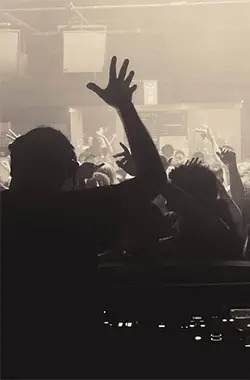
- Take Requests
- One of the good things about club DJing is that you are not expected to take requests. You generally only play exactly the music that you like.
- However, with party DJing, it can be an idea to take requests and even encourage them. This is because people are there to have fun, rather than to listen to a DJ/genre specifically.
- So, while a lot of DJs resent having to take requests, they can make a crowd feel more involved.
- And, of course, if the request is terrible you don’t always have to play them.
- Everyone else’s enjoyment comes before your own
- A lot of DJs who play clubs are highly pretentious. And that’s fine.
- This is because with club DJing you are attempting to establish yourself a very specific reputation.
- At parties, however, everyone in is there usually just her hang out with their friends. Therefore putting their enjoyment before your own will ensure everyone has a good time.
- Watch the crowd & interact
- Again watch the crowd, interact with them and go with the flow that they are dictating.
- Build your sets around the tracks they enjoy rather than the way that you think the night should go.
When you relax into it and go with the flow you’ll find everyone has a great time and by proxy, you will too. People will remember there was a great DJ that night, even if they don’t remember the specific music played.
How to make money as a DJ…apart from gigs.
Conclusion – How to DJ a Party
There have been many different tips mentioned above, all of which will help you DJ a party successfully. If I had to summarize what I learned from playing parties it would be this.
The key in how to DJ a party is to go in with zero expectations, and an open mind.
In fact, some parties I’ve played with were done using someone else’s record box. I knew little to none of the tracks. This meant I had to be entirely open-minded and, purely by watching the crowd and previewing music in my headphones, I was able to construct sets completely on the fly that kept everyone dancing.
So be open-minded, keep the dancefloor happy and you’ll be guaranteed to throw a good party, where everyone has fun.
FAQs: How to DJ a Party
What do I need to DJ a party?
In short, the only thing you need to do a party is some way to curate a list of tracks that you want to play to an audience through a sound system. There are a few ways to achieve this depending on what budget you have and your level of technical ability.
The simplest way is to curate a playlist on something like Spotify, either on a laptop or a phone, and then enable DJ mode. Then you can simply plug into a sound system and press play. If you have more technical ability or want to learn how to DJ properly then you can get a set of DJ decks (see our recommended decks here) and a mixer (our recommended mixer). This gives you full control over the audio and allows you to blend and mix tracks together. However, this requires practicing before the party.
Having decks doesn’t require you to use a laptop if you don’t have one. If you do have a laptop then there are many different DJ software options, such as Ableton Live, Traktor or Serato. These allow you to store thousands of tracks on your computer and then using specific hardware i.e decks or controllers, then you are able to mix tracks exactly as if you had a traditional DJ setup.
What is meant by DJ party?
DJ party simply means that you have a person present, with equipment, that will be selecting music and then mixing it on the fly depending on what people at the party are enjoying. A party where there is simply a playlist playing in the background, even if there is a dancefloor it is technically not a DJ party. This is because the music has been pre-selected and will just play through in order one by one. Whereas having a person mixing live means they are able to, in the moment, control the energy of the party.
For example, if people are enjoying high energy tracks and in the mood for dancing then the DJ can keep playing track after track that matches that energy. Then when people get a bit more tired or need to top-up their drinks, then the DJ can slow the pace and energy down so that people can take a rest before the energy gets ramped up again.
In short, a DJ party simply means you have a DJ playing live.
How much does a DJ get paid?
This varies massively depending on the situation i.e the type of event, whether it is a corporate event or just for fun, and also the ability of the DJ. At house parties, for example, a DJ will often be playing just for fun and will not be being paid anything because there is no entrance fee being charged at the door. For club or corporate events where there is money changing hands then it is expected to pay a DJ.
Whether a DJ is paid by the hour or a fixed fee usually depends on the contract that has been negotiated beforehand. The amount a DJ can charge varies depending on their technical ability and how well-known they are.
A local DJ that is not famous but has spent a long time perfecting their skills and has a good reputation can easily charge $50 to $100 per hour for club gigs and up to a couple of thousand dollars for things like weddings. Mostly due to the importance of the event. A newer DJ that doesn’t have much experience may charge in the $10 to $50 region per hour for clubs gigs, and perhaps a few hundred for corporate or private events.
So if you are organising an event you need to take into account what budget you have available and then negotiate with the DJ beforehand, based on what they tell you their normal rate is.
What is the role of a DJ?
The main role of the a DJ is to keep the energy levels of an event high and keep the crowd happy and dancing. They do this by learning to read a crowd and understand what type of music they are enjoying most at that particular time. They then play more of that music in order to keep the dancefloor as full as possible.
They also take into consideration the type of event. For example, if it is an EDM night then they will play whatever style of EDM they are into, and what the crowd is enjoying. If it is a corporate event, then the DJ may instead play more commercial music in order to keep as many people, and as many different types of music tastes, as happy as possible.
Therefore a DJ must be flexible in their role, especially when playing corporate or paid events. They will need to pay attention to what is expected of them in order to help the event run as smoothly and make sure the crowd have a good time.
How should a DJ dress?
This largely comes down to personal preference, although it does also depend on the type of gig being played. When DJing a wedding, for example, then it is only right that they dress smart so that they don’t look completely out of place with the other guests. They can still be on the casual side, of course, but if they are being paid a good amount of money to be there then they should put in the effort to not look messy.
For club DJs, there are no restrictions on how a DJ should dress. Again it is an idea to not turn up looking messy as this doesn’t give a great impression. Some DJs have gimmicks i.e they dress up for their DJ gigs. This can vary massively from people like Daft Punk who wear robot helmets during their gigs, to DJs who parody well-known characters (like Jack Sparrow from Pirates of the Caribbean).
In short a DJ dress in any way they like. However, remember it is an opportunity to make yourself memorable to the audience that you are playing to.
What next?

